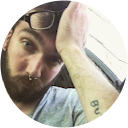Ever wonder why you feel itchy after taking certain medications, specifically opioids? Opioid-induced itching, also known as opioid-induced pruritus, is a common yet frequently overlooked side effect of opioid medications. These medications are prescribed for their potent pain-relieving properties, but they can sometimes lead to unwanted side effects. Of these side effects, opioid-induced itching is one of the most prevalent.
Understanding Opioid-Induced Pruritus
Opioids such as morphine, oxycodone, and codeine exert their pain-relieving effects by binding to opioid receptors, predominantly mu-opioid receptors, in the central and peripheral nervous system. While these interactions alleviate pain, they also stimulate itch-processing neurons, leading to pruritus.
Identifying Opioid-Induced Itching
People often describe opioid-induced itching as an intense, generalized itch that does not stem from any visible skin conditions or allergic reactions. Notably, the pruritus primarily affects the face, nose, and back. Clinicians diagnose this condition through careful history-taking, focused physical examination, and exclusion of other causes of itching.
Preventing Opioid-Induced Pruritus
When dealing with opioid-induced itching, prevention is usually the best strategy. Adopting a few precautionary measures could help mitigate the risk of opioid-induced pruritus. Some of these include:
- Taking the lowest effective dose of opioids to limit adverse effects.
- Rotating between different opioids to prevent receptor saturation and subsequent pruritus.
- Utilizing opioid-sparing analgesia methods, such as regional anesthesia.
Treatment for Opioid-Induced Itching
When opioid-induced pruritus occurs, various therapeutic interventions are available to alleviate symptoms:
- Antihistamines: Despite the non-allergic nature of opioid-induced itching, antihistamines like diphenhydramine can offer symptomatic relief due to their sedative properties.
- Naloxone and Naltrexone: These opioid antagonists can be effective when used in low doses by competitively binding to opioid receptors and preventing stimulation of itch-processing neurons.
- Serotonin Reuptake Inhibitors (SSRIs): Certain SSRIs, such as paroxetine, have shown promising results in treating opioid-induced pruritus.
- Opioid Rotation: Switching to another opioid medication can often result in significant improvement, as different opioids have varying pruritogenic properties.
New Developments
Advancements in the understanding of opioid-induced pruritus have paved the way for new and improved management strategies. Future research may focus on developing opioids that can selectively bind to pain-relieving neurons without stimulating itch-processing neurons. Meanwhile, genetic studies could reveal why some individuals are more susceptible to opioid-induced pruritus than others, leading to personalized treatment plans.
Recognizing Opioid Addiction
Opioid addiction manifests as an inability to control or stop the use of the drug, intense cravings, and continuing use despite harmful consequences. Signs can also include increasing opioid doses without a doctor’s advice, using opioids for non-medical reasons, and experiencing withdrawal symptoms when attempting to reduce or quit.
The Role of Professional Treatment in Opioid Addiction
Addiction is a complex but treatable disease that impacts brain function and behavior. Given its complexity, effective treatment often requires comprehensive, multidisciplinary interventions. Professional help can provide the necessary support and resources for recovery, which may include:
- Medication-Assisted Treatment (MAT): MAT, which involves the use of medications like buprenorphine, methadone, and naltrexone, along with counseling and behavioral therapies, is a “whole-patient” approach to opioid addiction treatment.
- Counseling and Behavioral Therapies: These therapies help modify attitudes and behaviors related to drug use, increase healthy life skills, and persist with other forms of treatment, such as medication.
- Support Groups: Peer support can provide an invaluable network of individuals who understand the challenges of recovery from personal experience.
If you or a loved one are struggling with opioid addiction, help is available. Addiction treatment centers like Healthy Life Recovery can help you break the shackles of addiction and learn to live a happier, healthier life. Healthy Life Recovery is a drug and alcohol rehab center located in San Diego, California, that offers medically-supervised detoxification and addiction treatment programs. Don’t hesitate to contact us today.






